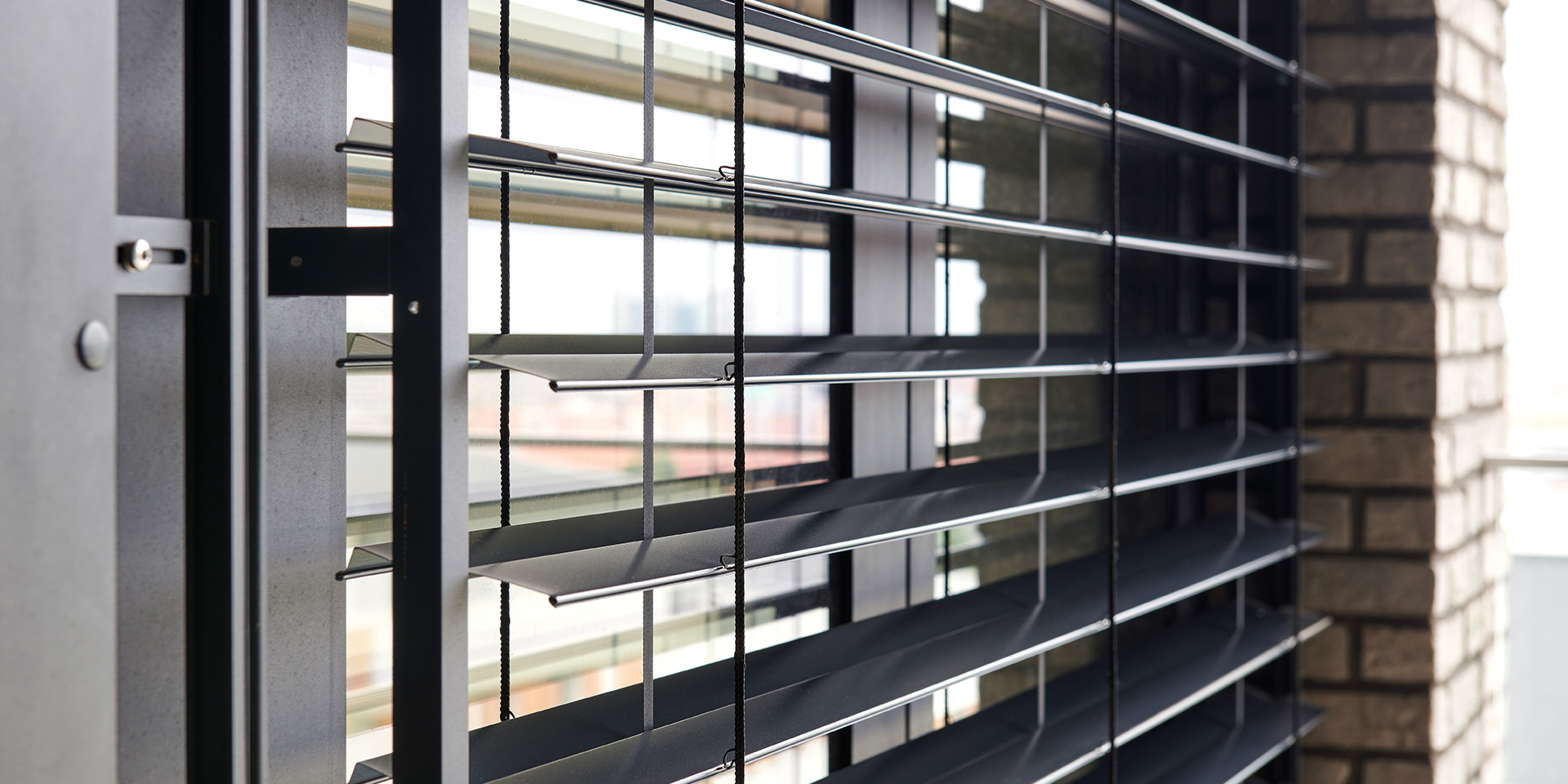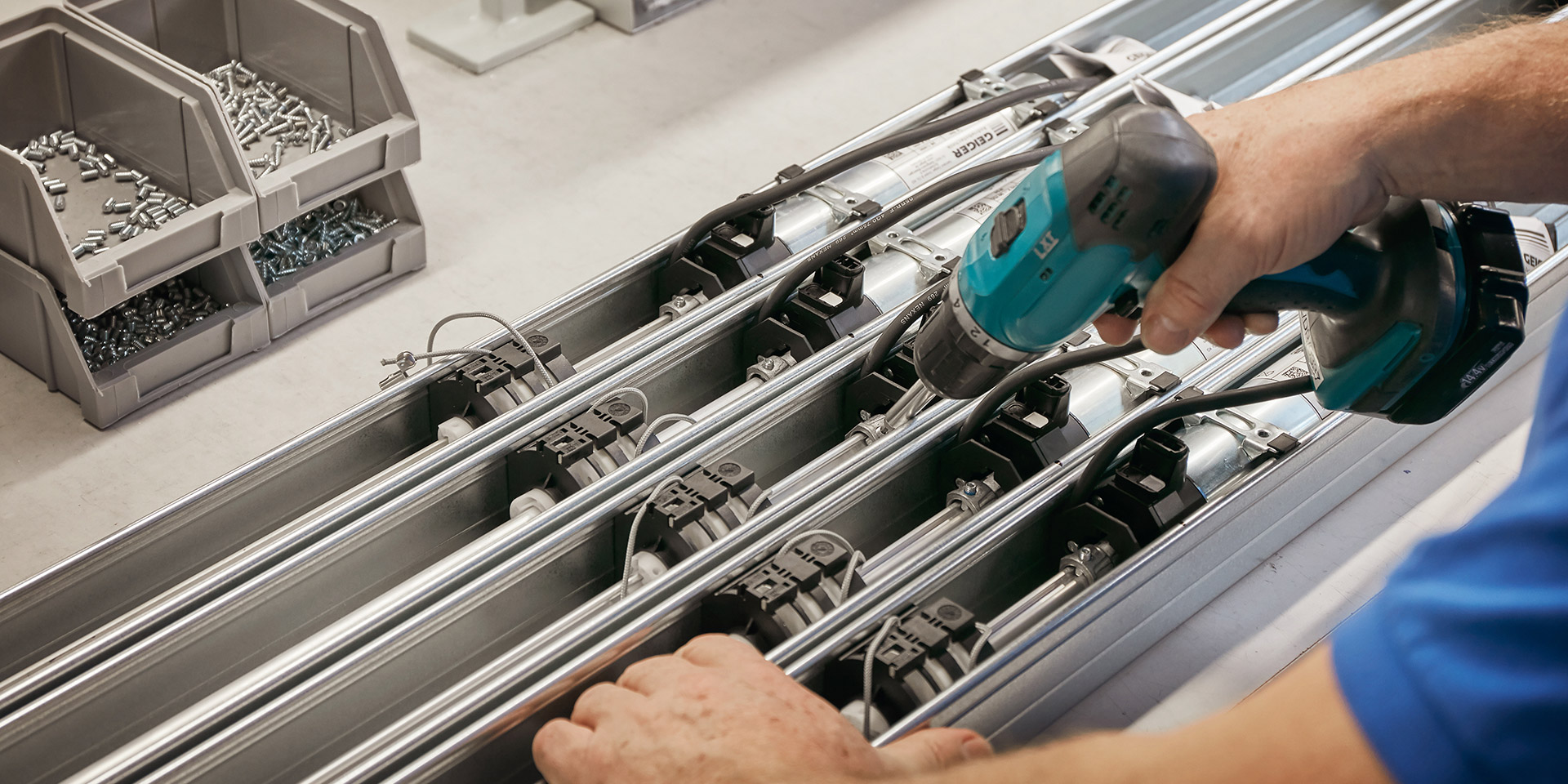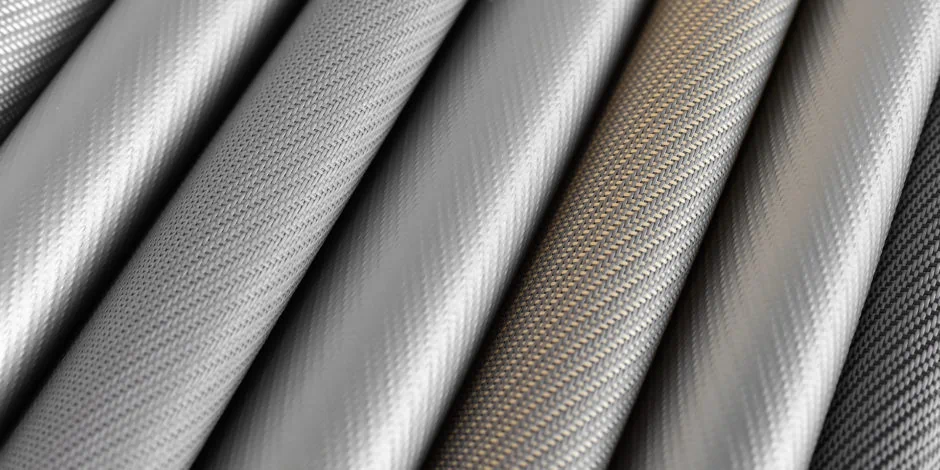Screen vs. conventional external roller shutters: what are the differences between them?
Screen roller shutters are still a relatively new thing in external shading. Read about their advantages and disadvantages compared to traditional aluminium or plastic roller shutters. We’ll also advise you on what to think about when choosing one.
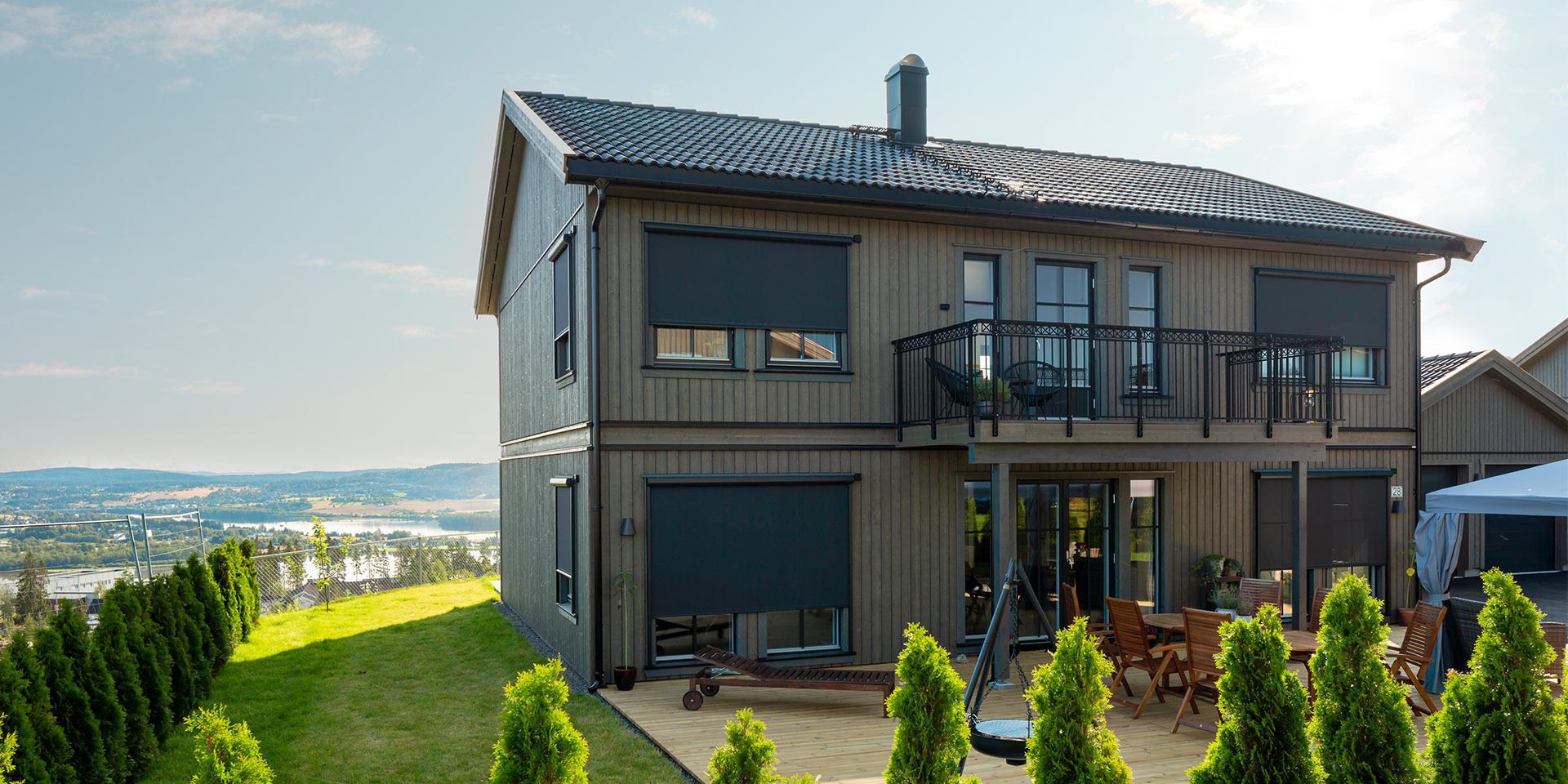
conventional external roller shutters
Conventional external roller shutters are made of firmly connected aluminium (or plastic) slats. Plastic is cheaper, but also more fragile and less durable. Aluminium roller shutters, ideally in an insulated version, are clearly a better solution.
They keep heat out and can handle wind
External roller shutters (especially those made of aluminium) have excellent thermal insulation properties. When closed, you create a barrier that will not let heat in the summer or cold in the winter reach the window pane (and thus the interior). A light-coloured roller shutter, for example, lets only 2.6% of the sun’s energy into the room when drawn.
In addition, roller shutters are so tough that they can withstand even very strong winds. At the same time, they are quiet because the wind does not disturb the firmly connected slats.
Serves as a safety feature and noise barrier
A drawn aluminium roller shutter also insulates noise well and makes it difficult for thieves to gain access at night or when you are away. There is also a lock in the bottom rail that locks the roller shutter so that it cannot be pulled up by force.
If you live on a busy road or have windows facing a busy pavement, aluminium roller shutters will give you greater peace and privacy.
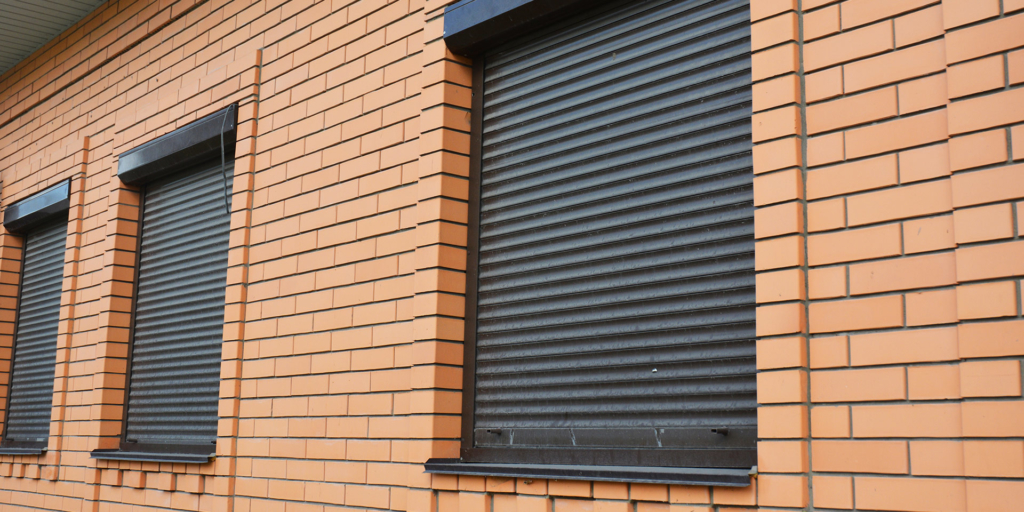
It will completely darken the room and block the view out
An advantage for some, a disadvantage for others – closed roller shutters create almost absolute darkness in the room. You will appreciate this at night or in the evening if you want privacy. People who need to sleep during the day between night shifts often go for roller shutters.
Unfortunately, you can’t see out through closed roller shutters, which can be depressing for some during the day. People then tend not to use the roller shutters, despite the heat entering the room.
External textile screens
External textile screens are most often made of two types of fabric:
- polyester fibre – acts as a solid surface, the fabric is first woven and then coated with a protective layer of PVC
- and fibreglass – reminiscent of cloth or dense mesh, the individual fibres are first treated with PVC and then woven.
You choose the blackout level
Compared to conventional roller shutters, you can choose the blackout level by selecting the fabric. Blackout roller shutters are the most effective, shade just as well as conventional aluminium roller shutters and create absolute darkness even during the day. But there are also heavy and light blackout fabrics that let some light through.
The thermal transmission also depends on the colour of the fabric. Lighter fabrics tend to reflect heat, while darker ones absorb it. However, they do not naturally reflect as much of the sun’s energy as aluminium.
Probably the biggest advantage of screens is that you can see out even with the shutters closed. That is why external textile screens are very popular for screening terraces, conservatories, pergolas or balconies. The screens cool and shade the space pleasantly, but at the same time do not deprive you of the view of the garden or countryside.
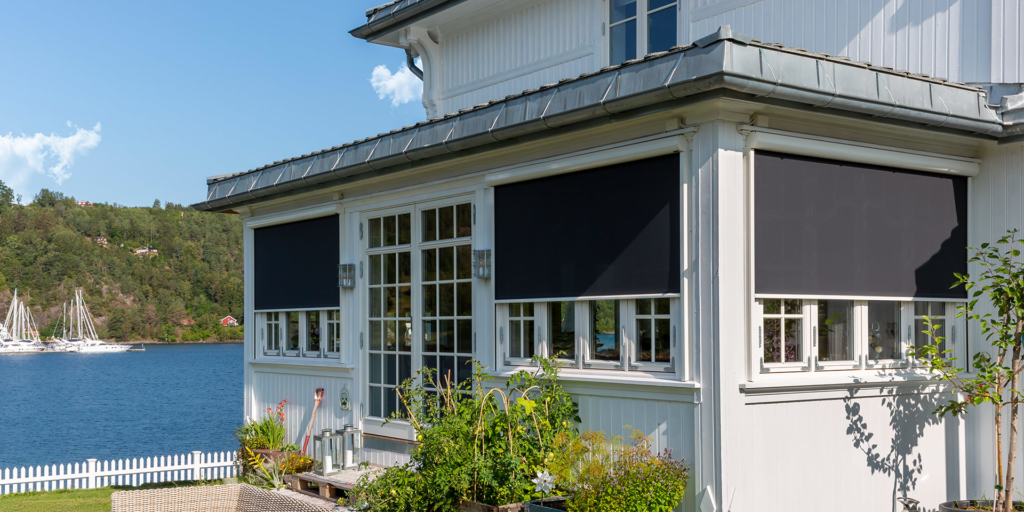
You can ventilate without letting in insects
If you’re used to having your windows half-open for ventilation, more air gets into the room through screens than through conventional roller shutters. In addition, they also act as protection against insects.
As for the wind resistance of screens, this depends mainly on how they are run. Cable-run ones resist the wind the least, while zipscreens with a width of up to 1.6 metres can withstand wind speeds of up to 88 km/h.
They are unobtrusive and shade larger areas
Screen roller shutters are very popular with architects because they are less obtrusive, warmer and cosier than aluminium roller shutters. In addition, you can choose two-tone screens, where the inside and outside of the fabric are a different colour. This makes it easier to match them to the interior and the exterior.
If you have large windows or glazed areas on your house, go for screens instead. At NEVA, we normally produce screens up to 14 m2 in size, while the maximum recommended size of aluminium roller shutters is 8m2.
Installation and control of roller shutters cost the same
In terms of installation complexity, they do not differ significantly. Both types of roller shutters need a box into which they roll up and side guiding rails. Always get professionals to install your roller shutters, do not do it yourself.
If you are building a house from the ground up, you can install the external shading in a box under the façade. When renovating and retrofitting in a window frame or lining, you will be interested in how much space the box above the window will take up.
A box for conventional roller shutters will always be bigger, because the slats in the roll take up more space than fabric.
- A box for aluminium roller shutters starts at approximately 13 × 13 cm for a normal house window.
- A box for textile screens for a French window is 10 × 10 cm.
If you want to control your external shading with an app or smart home, you’re not limited in this respect. Smart motors can be installed for both types of shading. Likewise, you can control both types of shutters manually.
Verdict: you can combine shading
Conventional aluminium roller shutters are better at insulating rooms from heat and noise, are more robust and provide a greater sense of security. Screens, on the other hand, are more unobtrusive, more elegant and, most importantly, you can see out through them, even when they are closed.
Of course, combining shading is not a problem. For example, place conventional aluminium (or blackout) roller shutters in bedrooms where you want absolute darkness for a comfortable sleep. In the living room or kitchen, choose screens in softer colours. It’s best to consult an architect, who will also choose the shading with respect to the orientation of the house. From a design point of view, it is ideal to stick to one type of shading on one side of the house.

